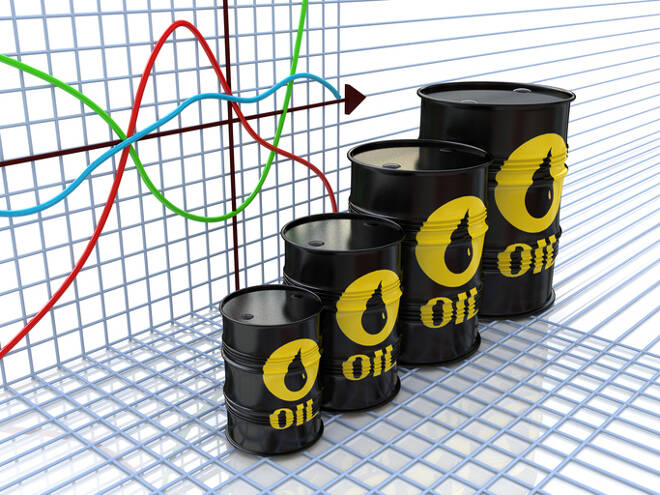Advertisement
Advertisement
Oil Price Fundamental Weekly Forecast – OPEC Cuts May Not Be Enough to Offset Rising U.S. Production
By:
With the OPEC news out of the way, traders will return to monitoring the progress of the U.S.-China trade negotiations and the rising U.S. supply. Some traders are still uncertain about whether the OPEC deal will be enough to trim the global supply enough to offset the rising U.S. output and the drop in global demand growth.
U.S. West Texas Intermediate and international-benchmark Brent crude oil futures settled sharply higher last week with the rally being driven by strong global PMI data, solid U.S. economic data, optimism over a U.S.-China trade deal and a major decision by OPEC and its allies to trim production and stabilize prices.
Last week, January WTI crude oil settled at $59.20, up $4.03 or +7.30% and February Brent crude oil finished at $64.39, up $3.90 or +6.06%.
Economic Data Eases Some Demand Concerns
A surprise improvement in Chinese manufacturing activity, the world’s second biggest economy, underpinned crude oil early in the week. Chinese factory activity expanded at the quickest pace in almost three years in November, a private business survey showed on Monday, following upbeat official data over the weekend.
On Friday, the U.S. government released a blockbuster jobs report that drove the Dow Jones Industrial Average soaring 337.27 points to close at 28,015.06, its best single-day performance in over two months.
The U.S. economy added 266,000 jobs in November, according to figures released Friday by the Labor Department, soaring well above the 187,000 estimate. The unemployment rate fell to 3.5%, matching its lowest level since 1969.
Optimism over Trade Deal, but Tensions Still Exist
Beijing and Washington continue to negotiate a first phase trade deal aimed at de-escalating the trade dispute between the two economic powerhouses, but they continue to bicker over key details.
Late last week, Chinese officials held fast to their line that existing tariffs must come off as part of an interim deal. However, China did offer an olive branch by waiving import tariffs for some soybeans and pork shipments from the United States.
Top White House economic adviser Larry Kudlow said on Friday that a December 15 deadline is still in place to impose a new round of U.S. tariffs on some $156 billion of China’s remaining exports to the United States, but the president likes where trade talks with China are going, he added.
China, however, countered with a threat of its own, with one Chinese official telling Reuters that China will implement its own tariffs as a countermeasure if the December 15 tariffs go into place, which may dash any chance of a near-term trade deal.
OPEC and Allies Agree to Lower Production
OPEC and its allies including Russia, agreed Friday to deepen output cuts in an effort to trim the global supply and stabilize prices. The move is designed to combat stagnant global economic growth blamed on the U.S.-China trade war. OPEC+ stopped short of pledging action beyond the first quarter 2020, causing analysts and traders to question the impact of the latest curbs.
According to reports, the cuts will expand the existing agreement by an extra 500,000 barrels per day (bpd) reduction in the first quarter next year, through tighter compliance and some adjustments. OPEC’s current agreement is a supply cut of 1.2 million bpd and the increased amount represents about 1.7% of global oil output.
Saudi Arabia’s Energy Minister Prince Abdulaziz bin Salman also told reporters that its quota would be an additional 167,000 barrels per day through March 2020. He also said that the kingdom would continue to exceed its quota by 400,000 barrels a day, which means the overall production cut will actually be closer to 2.1 million barrels a day.
Weekly Forecast
With the OPEC news out of the way, traders will return to monitoring the progress of the U.S.-China trade negotiations and the rising U.S. supply.
Some traders are still uncertain about whether the OPEC deal will be enough to trim the global supply enough to offset the rising U.S. output and the drop in global demand growth.
About the Author
James Hyerczykauthor
James Hyerczyk is a U.S. based seasoned technical analyst and educator with over 40 years of experience in market analysis and trading, specializing in chart patterns and price movement. He is the author of two books on technical analysis and has a background in both futures and stock markets.
Did you find this article useful?
Latest news and analysis
Advertisement
